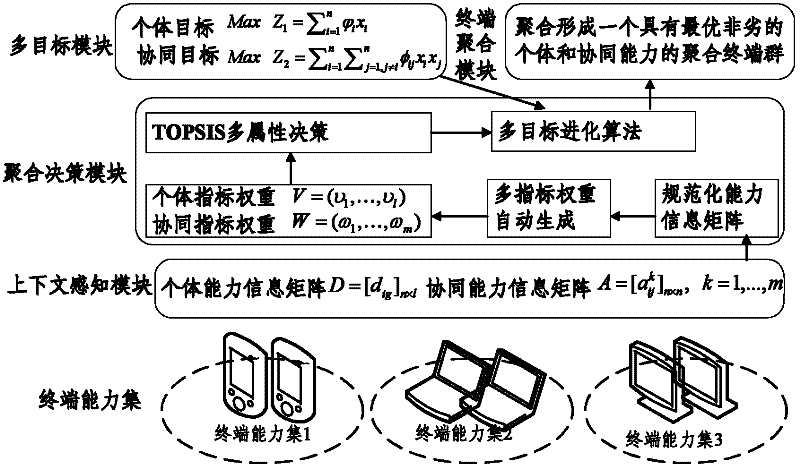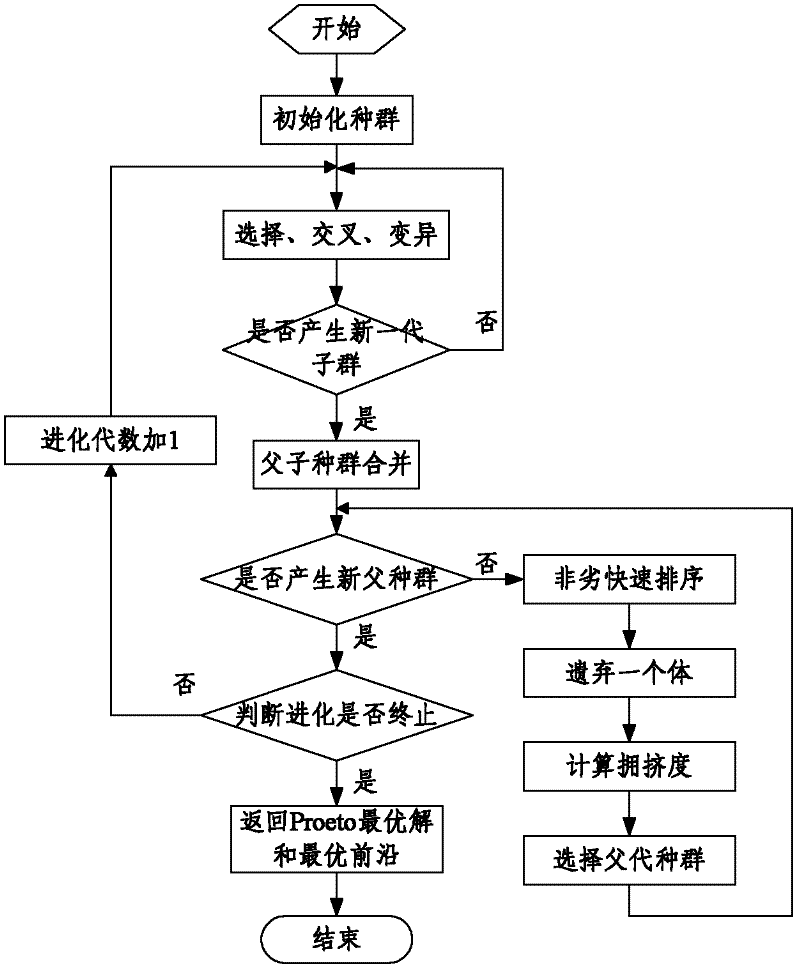Terminal polymerization system and method in heterogeneous ubiquitous network environment
A network environment and terminal technology, applied in transmission systems, electrical components, gene models, etc., can solve the problem of terminal aggregation without fully considering multi-objective coordination, and achieve the best overall performance
- Summary
- Abstract
- Description
- Claims
- Application Information
AI Technical Summary
Benefits of technology
Problems solved by technology
Method used
Image
Examples
Embodiment Construction
[0034] The technical solutions in the embodiments of the present invention will be clearly and completely described below in conjunction with the accompanying drawings in the embodiments of the present invention. Apparently, the described embodiments are part of the embodiments of the present invention, not all of them. Based on the embodiments of the present invention, all other embodiments obtained by persons of ordinary skill in the art without making creative efforts belong to the protection scope of the present invention.
[0035] The present invention proposes a terminal aggregation system and method in a heterogeneous ubiquitous network environment. According to the individual information and collaborative information of terminals in different terminal capability sets, the closeness between the terminal and the optimal terminal is calculated through TOPSIS multi-attribute decision-making. Using the multi-objective evolutionary algorithm to calculate a set of optimal solu...
PUM
 Login to View More
Login to View More Abstract
Description
Claims
Application Information
 Login to View More
Login to View More - R&D
- Intellectual Property
- Life Sciences
- Materials
- Tech Scout
- Unparalleled Data Quality
- Higher Quality Content
- 60% Fewer Hallucinations
Browse by: Latest US Patents, China's latest patents, Technical Efficacy Thesaurus, Application Domain, Technology Topic, Popular Technical Reports.
© 2025 PatSnap. All rights reserved.Legal|Privacy policy|Modern Slavery Act Transparency Statement|Sitemap|About US| Contact US: help@patsnap.com



